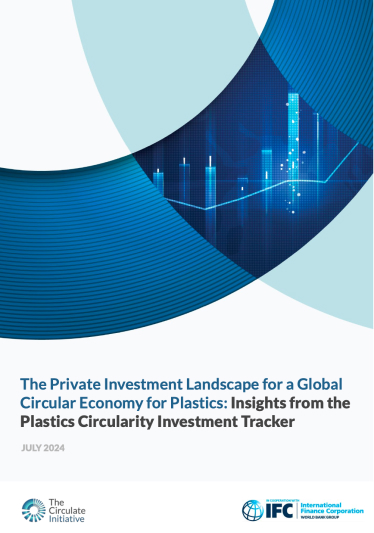

The Private Investment Landscape for a Global Circular Economy for Plastics: Insights from the Plastics Circularity Investment Tracker
An estimated US$ 15.4 trillion in private sector investments and US$ 1.5 trillion in public expenditure are needed between 2025 and 2040 to reduce annual mismanaged plastic volumes by 90% relative to 2019 levels.
However, there is limited transparency around the financing of plastics circularity solutions and a lack of data or resources to assess the investment opportunity. Governments, investors, multilateral organizations, and other stakeholders committed to solving the global plastic pollution crisis need to have a clear view of capital being deployed to ensure funding barriers to circularity can be addressed.
Launched in cooperation with IFC in July 2024, this report provides the latest data and insights from the third edition of the Plastics Circularity Investment Tracker. The Investment Tracker tracks the scale of private investments driving a circular economy for plastics globally from 2018 to 2023. In this edition, several examples of successful private capital mobilization are included.
The findings enable decision-makers to identify opportunities where resources should be directed to scale solutions and unlock the full potential of a circular economy for plastics.
Key takeaways from this report include:
- Global investments into plastics circularity between 2018 and 2023 have remained relatively steady, at an average of US$ 32 billion annually, a fraction of the more than a trillion dollars per year needed.
- Emerging economies received only 6% of investments since 2018 despite being disproportionately impacted by plastic pollution.
- Banks and corporate investment have a critical role in supporting plastic circularity solutions, contributing to 37% and 31% of deal value respectively over the period.
- The bulk of investment (82%) continues to flow to downstream solutions like recovery and recycling, with only 4% directed to refill and reuse.
- The report showcases examples of innovative investment approaches such as themed-loans and bonds, blended finance, outcomes-based financing, and viability gap funding – which will be critical to the mobilization of private capital for tackling plastics pollution.

Read Report
*By clicking the "Download" button, you are agreeing to The Circulate Initiative’s Terms of Use and Privacy Policy.